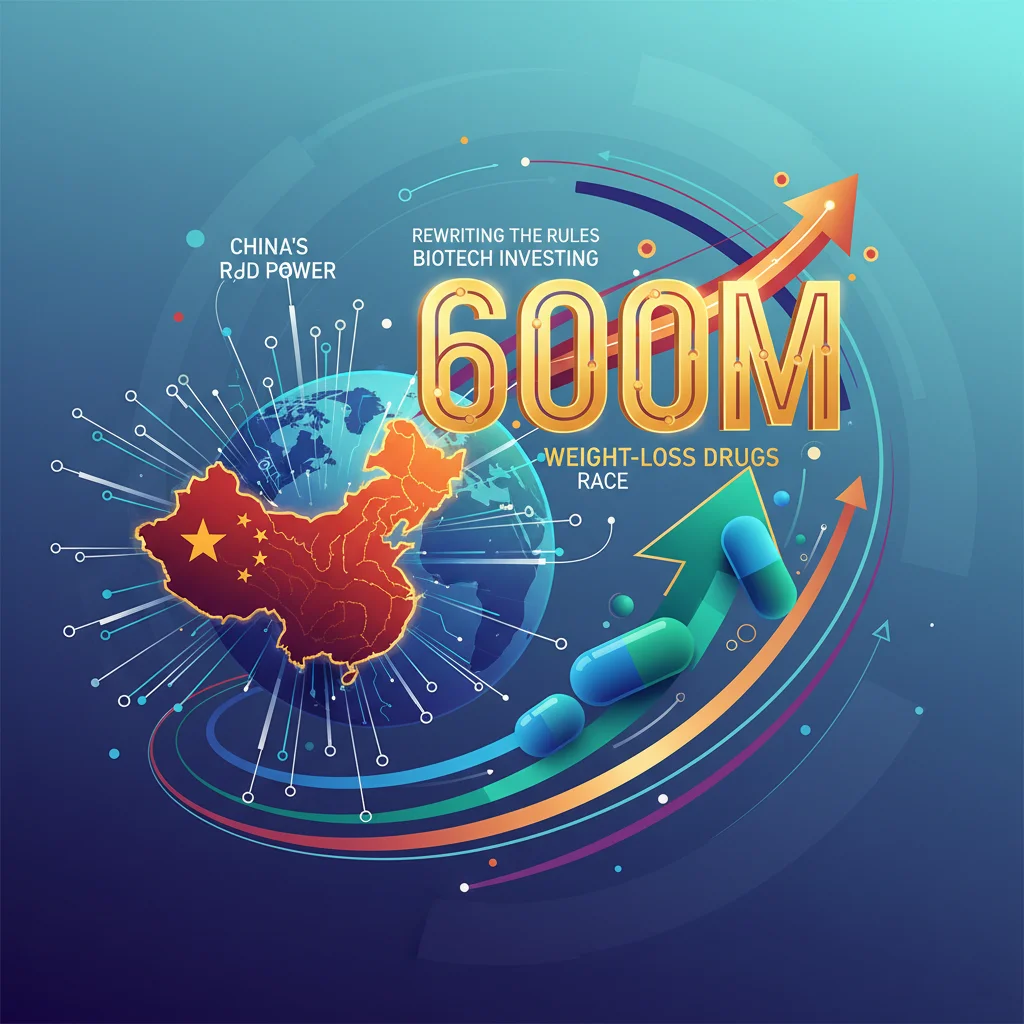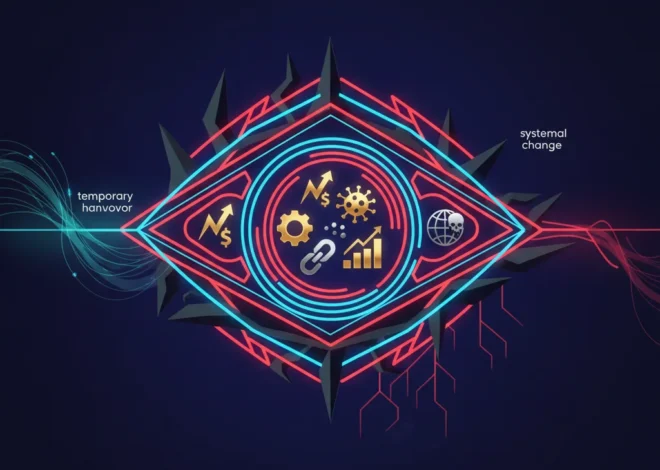
The $600M Bet: How the Global Race for Weight-Loss Drugs is Rewriting the Rules of Biotech Investing and Tapping into China’s R&D Power
The New Gold Rush: Chasing the Trillion-Dollar Weight-Loss Market
In the world of finance and investing, few trends have captured the collective imagination—and wallet—quite like the explosion of GLP-1 agonist drugs for weight loss. Propelled by the blockbuster success of Novo Nordisk’s Ozempic and Wegovy, and Eli Lilly’s Mounjaro, the race is on to develop the next generation of therapies. This isn’t just a healthcare story; it’s a seismic event in the global economy, with analysts projecting the market could surpass $100 billion by 2030. For investors, the potential returns are staggering, transforming the stock market landscape for pharmaceutical giants and creating a frenzy of venture capital activity around nimble biotech startups.
Enter Carmot Therapeutics, a US-based biotech firm that recently made headlines with an eye-watering $600 million fundraising round. This massive injection of capital for a company still in its clinical stages signals immense confidence from the investment community. But the real story lies not just in the “what” but the “how.” Carmot’s strategy reveals a critical, and often overlooked, component of modern drug development: the strategic importance of conducting clinical trials in China. This approach allows companies to accelerate timelines, slash costs, and gain a competitive edge in a cutthroat market, fundamentally altering the economics of pharmaceutical innovation.
This isn’t merely a logistical decision. It’s a calculated financial strategy that has profound implications for investors, the global banking ecosystem, and the intricate dance of US-China economic interdependence. Understanding this dynamic is key to navigating the future of healthcare investing.
The China Advantage: Speed, Scale, and Financial Efficiency
For decades, the United States and Europe were the undisputed epicenters of clinical research. However, the landscape is shifting. The intense pressure to bring new drugs to market faster and more efficiently has forced biotech and pharmaceutical companies to look abroad. China has emerged as a powerhouse in this domain, offering a unique combination of advantages that are simply too compelling to ignore.
The core appeal, as highlighted by Carmot’s strategy, is the ability to achieve “an earlier sign of a drug’s potential” (source). In the high-stakes world of biotech investing, early data is gold. Positive results from a Phase 1 or Phase 2 trial can unlock further funding, boost valuations, and attract acquisition offers from Big Pharma. By running these initial trials in China, companies can get this crucial data months, or even years, ahead of a US-based timeline and at a fraction of the cost.
To illustrate the stark differences, consider the key variables in clinical trial execution:
| Factor | United States / Western Europe | China |
|---|---|---|
| Patient Recruitment | Often slow and competitive, leading to significant delays. | Large, centralized, and often treatment-naïve patient population allows for rapid enrollment. |
| Operational Costs | High costs for clinical sites, personnel, and administrative overhead. A single trial can cost hundreds of millions. | Significantly lower labor and operational costs, leading to substantial savings. |
| Timeline | Lengthy regulatory start-up and recruitment phases can extend trial durations. | Streamlined processes and faster recruitment can dramatically shorten the time to data readout. |
| Infrastructure | Established, high-quality infrastructure but can be fragmented. | Rapidly growing network of high-tech hospitals and experienced Contract Research Organizations (CROs). |
This strategic arbitrage is not just about saving money; it’s about optimizing capital and accelerating the entire value creation cycle. For a venture-backed company like Carmot, every month saved is a month less of burn rate, and every positive data point de-risks the asset for the next round of investing or a potential IPO on the stock market.
A New Financial Blueprint for Biotech Innovation
The Carmot case study is a masterclass in modern biotech finance. The journey from a promising molecule in a lab to a blockbuster drug on the market is incredibly capital-intensive. This process relies on a sophisticated ecosystem of venture capital, global banking, and strategic financial planning.
The $600 million raised by Carmot is a testament to this new model. Investors are no longer just betting on the science; they are betting on a global execution strategy that maximizes the probability of success while minimizing the time to a major value inflection point. This is where financial technology plays a crucial, albeit behind-the-scenes, role. The seamless flow of hundreds of millions of dollars across borders, the complex currency hedging strategies, and the digital platforms used for investor relations and due diligence all fall under the umbrella of fintech innovation that underpins this globalized R&D model.
Furthermore, this strategy has profound implications for M&A and the broader stock market. Big Pharma companies, flush with cash but facing patent cliffs on older drugs, are constantly hunting for promising assets. A small biotech with positive Phase 2 data from a well-executed trial in China becomes a prime acquisition target. The acquisition of Carmot by Roche for $2.7 billion upfront shortly after its fundraising underscores this point perfectly. The China trials provided the crucial data that gave Roche the confidence to make such a massive bet. This creates a clear and lucrative exit path for early investors, driving more capital into the sector.
Navigating the New World of Globalized R&D and Economics
The trend towards globalized clinical trials represents a paradigm shift with far-reaching consequences for the international economy. On one hand, it fosters a more efficient and interconnected global healthcare system, potentially bringing life-saving drugs to patients faster. It creates a symbiotic relationship where US capital and innovation are paired with China’s scale and operational efficiency.
On the other hand, it creates new dependencies and risks. The U.S. risks ceding a degree of control over a critical part of its innovation pipeline. The complex nature of these cross-border collaborations also raises questions about data integrity and security. While not yet a widespread solution, some futurists in the financial technology space are exploring how `blockchain` could be used to create immutable, transparent ledgers for clinical trial data, potentially mitigating concerns about data tampering and enhancing trust between international partners.
For those involved in trading and investing, this new landscape requires a more nuanced approach to due diligence. It’s no longer enough to analyze the science and the addressable market. Investors must now act as geopolitical strategists, evaluating a company’s operational footprint, its cross-border dependencies, and its contingency plans for navigating a volatile global stage. The economics of drug development are now inextricably linked with the economics of international relations.
Conclusion: A High-Stakes Game of Science, Finance, and Geopolitics
The story of Carmot Therapeutics is more than just another big biotech deal. It is a powerful illustration of the forces shaping the future of medicine, finance, and the global economy. The relentless pursuit of the next weight-loss blockbuster has accelerated the globalization of clinical research, with China playing a pivotal role as an R&D accelerator.
This strategy offers a compelling model for speed and capital efficiency, transforming the risk-reward calculus for biotech investing. However, it also introduces a new layer of geopolitical complexity that cannot be ignored. For business leaders, finance professionals, and investors, success in this new era will require a deep understanding of not only the science in the lab but also the shifting sands of the global chessboard. The biggest rewards will go to those who can master this intricate interplay of innovation, international finance, and strategic foresight.


